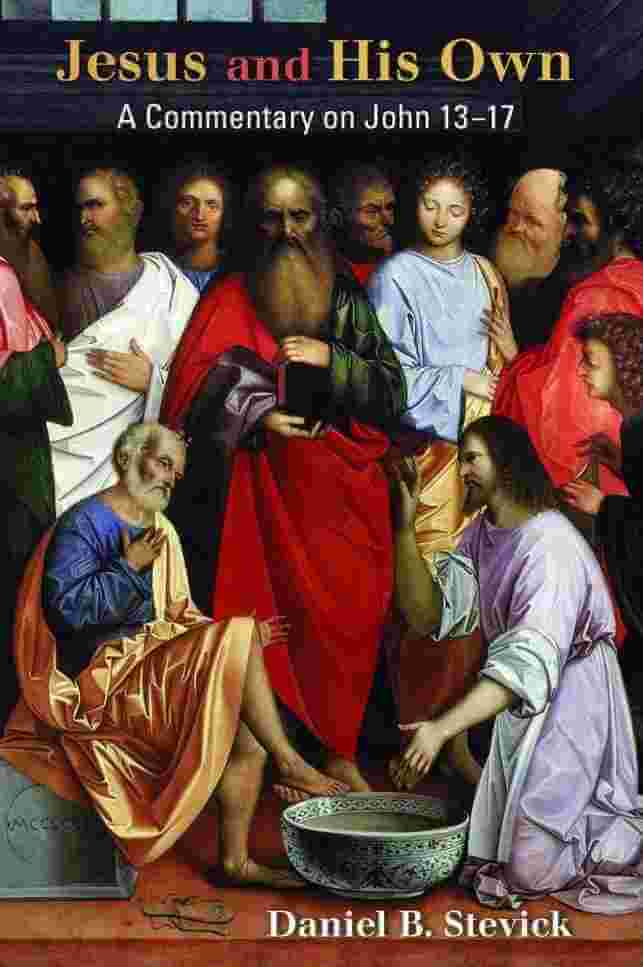There is something new and startling in both his person and his teaching that defies the categories provided by the world and culture in which he lived.
Francis J. Moloney
This paper argues that the "new and startling" dimension of Jesus's teaching—the radical proclamation of the Kingdom of God as a present reality—can only be fully understood through the divine intervention of the Paraclete promised in John 14-16. Drawing on contemporary parable scholarship and inaugurated eschatology, this study demonstrates that Jesus's mission was deliberately preparatory, requiring completion by a subsequent divine personality. The paper presents compelling theological and scriptural evidence that this promise has been fulfilled in Shri Mataji Nirmala Devi (1923-2011), who openly declared herself as the Holy Spirit incarnate and spent four decades delivering thousands of lectures and public programs worldwide, granting mass spiritual awakening through Kundalini realization.
Central to this argument is the recognition that the Paraclete represents a distinct divine manifestation with singular authority over humanity's final redemption, as evidenced by Jesus's warning in Matthew 12:31-32 that blasphemy against the Spirit is unforgivable. The paper examines the feminine aspect of the Holy Spirit in Hebrew and Aramaic traditions, the Johannine functions fulfilled through Shri Mataji's mission, and George Eldon Ladd's concept of "the coming of Jesus in the Paraclete." It concludes that humanity's failure to recognize this eschatological fulfillment constitutes a spiritual catastrophe of immense proportions, challenging Christian theologians to engage with this irrefutable scriptural and experiential evidence.
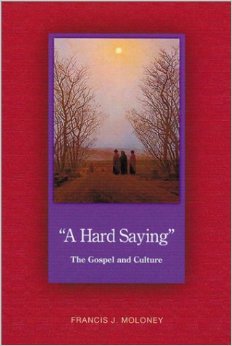
“A Christian view of culture and human history, which are intimately linked, looks to creation and the role of a creating God. At the center of the life and teaching of Jesus of Nazareth stand his convictions about the reigning presence of God as creator and Sovereign. This is most evident in his teaching through the parables of the kingdom.
The Parables and the Kingdom
The notion of God as sovereign over the whole of creation, and especially in the divine role at the center of God's human creation, was found in the Old Testament (see, for example, Pss 22:28; 45:6; 103:19; 145:11-13; Dan 4:3, 34; 1 Chr 17:14; 29:11). The creator God made all things perfectly (see especially Gen 1:1-2:4). As creator, however, YHWH also saves, judges, and loves a people with whom he has forged a covenant. Thus the Old Testament notion of God as Sovereign also carried with it the idea of an end-time, a 'day of the Lord' that would spell the end of human history and the final manifestation of God's rule (see, for example, Isa 2:2-4, 24-27; 24:21-23, 32:22; 52:7-10; Micah 2:12-13; 4:1-7; Obadiah 21, Zechariah 9-14).
Jesus uses the term to refer to a future decisive intervention of God into the affairs of men and women, where the false values of the world would be reversed and the values of God established (see, for example, Matt 5:3-12//Luke 6:20-23). He used the traditional symbols, such as the 'messianic banquet,' to express this idea (see especially Matt 8:11; the same symbolism may be behind John 2:1-11). He also spoke of a final blessed state into which the redeemed would 'enter,' which they would 'inherit' or 'receive' at some point in the future (se, for example, Mark 9:47; 10:14-15, 23-25; Matt 5:20; 7:21; 21:31). Such a usage can be explained in terms of Israel's idea of God as sovereign, and especially in terms of the apocalyptic use of the expression 'Kingdom of God' which, although rare, is to be found in the Judaism of the time of Jesus. Such background, however, cannot explain the person and teaching of Jesus. There is something new and startling in both his person and his teaching that defies the categories provided by the world and culture in which he lived. It is clearest in all its radical nature in Jesus' insistence that in his person and activity God's decisive intervention was already present: 'But if it is by the finger of God that I cast out the demons, then the Kingdom of God has come to you (Luke 11:20//Matt 12:28.' While there are other isolated sayings of Jesus that are similarly significant in this regard (see especially Matt 11:12-14 and Luke 17:20-21), contemporary parable study is showing with increasing clarity that in Jesus of Nazareth the ways of God were being reestablished.”
A Hard Saying: The Gospel and Culture
Francis J. Moloney, Michael Glazier (July 1, 2001) p. 186-7
The Fulfillment of Divine Intervention: Jesus, the Kingdom Parables, and the Paraclete Shri Mataji Nirmala Devi
Author: Manus AI
Date: November 26, 2025
Table of Contents
- 1. Introduction
- 2. Jesus’s Radical Teaching: The Kingdom as “Already Present”
- 3. The Paraclete Promise: Completion of What Jesus Began
- 4. Shri Mataji Nirmala Devi: The Paraclete Incarnate
- 5. Why the “New and Startling” Can Only Be Understood Through the Paraclete
- 6. Contemporary Parable Scholarship and the Kingdom
- 7. The Eschatological Disaster: Humanity’s Failure to Recognize
- 8. Conclusion: The Call to Awakening
- References
1. Introduction
In his analysis of the Gospels, theologian Francis J. Moloney observes, “There is something new and startling in both his [Jesus’s] person and his teaching that defies the categories provided by the world and culture in which he lived.”[1] This paper will argue that this “new and startling” dimension of Jesus’s message—the radical proclamation of the Kingdom of God as a present reality—can only be fully and truly understood through the divine intervention of the Paraclete, the Comforter promised by Christ, who has fulfilled this role in the person of Shri Mataji Nirmala Devi. From 1970 until her passing in 2011, Shri Mataji delivered thousands of lectures and offered hundreds of public programs across the globe, completing the message that Jesus began and inaugurating the collective spiritual awakening He foretold. This paper will demonstrate that God’s decisive intervention into the affairs of humanity has been accomplished through the Paraclete, Shri Mataji, and that the vast majority of humanity, conditioned by centuries of religious dogma and patriarchal expectations, has tragically missed this mind-blowing, epic fulfillment of divine prophecy.
2. Jesus’s Radical Teaching: The Kingdom as “Already Present”
To grasp the radical nature of Jesus’s message, one must first understand the cultural and theological landscape in which he taught. The Old Testament established God as the sovereign Creator and Judge, and it cultivated a powerful eschatological hope for a future “day of the Lord” when God would decisively intervene in human history, vanquish evil, and establish His eternal rule.[2] This expectation was largely understood in political and nationalistic terms—a future, apocalyptic event that would restore Israel’s fortunes and visibly manifest God’s power on a global scale.
What Was “New and Startling” in Jesus
The “new and startling” element that Moloney identifies was Jesus’s insistence that this long-awaited divine intervention was already present in his own person and activity. He declared, “But if it is by the finger of God that I cast out the demons, then the Kingdom of God has come to you” (Luke 11:20).[3] This was not a future promise but a present reality. He was not merely a prophet pointing to the Kingdom; he was the King inaugurating it. This claim shattered the prevailing Jewish eschatological framework. The Kingdom was not arriving with armies and political upheaval, but quietly, powerfully, and internally. When asked by the Pharisees when the Kingdom of God would come, Jesus replied, “The Kingdom of God does not come with observation; nor will they say, ‘See here!’ or ‘See there!’ For indeed, the Kingdom of God is within you” (Luke 17:20-21).[4]
The “Already But Not Yet” Tension
This created a theological tension that has been a central theme of New Testament scholarship, often described as the “already but not yet” nature of the Kingdom.[5] Theologians like George Eldon Ladd argued that the Kingdom of God is both a present reality and a future hope. It was inaugurated by Jesus but not yet consummated. Believers are “already” citizens of the Kingdom, yet they do “not yet” see its full, glorious manifestation. This framework is crucial, for it creates the necessary theological space for a subsequent, completing intervention. Jesus began the work, but he explicitly stated that it would be finished by another. The “not yet” of the Kingdom’s fulfillment points directly to the promise of the Paraclete.
3. The Paraclete Promise: Completion of What Jesus Began
Jesus was acutely aware that his earthly mission was preparatory. He explicitly told his disciples, “I have much more to say to you, more than you can now bear. But when he, the Spirit of truth, comes, he will guide you into all truth” (John 16:12-13).[6] This points to an unfinished revelation, a divine plan that required a subsequent phase. This next phase would be initiated by the Paraclete, the promised Comforter.
Jesus’s Explicit Promises
In his final discourse at the Last Supper (John 14-16), Jesus makes a series of profound promises regarding this coming figure. He refers to the Paraclete as “another Advocate” (John 14:16), implying that he himself was the first.[7] He states that it is to the disciples’ advantage that he leaves, because “unless I go away, the Advocate will not come to you; but if I go, I will send him to you” (John 16:7). The Paraclete’s role is to complete what Jesus started: to “teach you all things and will remind you of everything I have said to you” (John 14:26) and to “guide you into all truth.” This is not a subordinate or lesser role; it is the role of a finisher, a divine personality tasked with bringing God’s plan for humanity to its ultimate fruition.
The Paraclete as a Distinct Divine Personality
A critical, and often overlooked, theological point is that the Paraclete is presented as a distinct divine personality, not merely an abstract force or a synonym for Jesus’s disembodied presence. The most startling evidence for this is found in Matthew 12:31-32, where Jesus makes a clear distinction between himself and the Holy Spirit: “And so I tell you, every kind of sin and slander can be forgiven, but blasphemy against the Spirit will not be forgiven... anyone who speaks a word against the Son of Man will be forgiven, but anyone who speaks against the Holy Spirit will not be forgiven, either in this age or in the age to come.”[8]
The implication is staggering. An offense against the Paraclete is more grievous than an offense against Jesus himself. This theological hierarchy necessitates that the Paraclete is a separate and higher manifestation of the divine, possessing a unique and singular authority over the final judgment and redemption of humanity in the “age to come.”
The Coming of Jesus in the Paraclete
This understanding reframes the concept of the “Second Coming.” As George Eldon Ladd notes, the New Testament sayings about a future coming do not necessarily refer to a “coming again” in the same physical form, but rather to “the coming of Jesus in the Paraclete.”[9] The Second Coming is not a physical return but a spiritual fulfillment through the Paraclete. It is the manifestation of a divine personality who embodies the Spirit of Christ and completes his mission on Earth. Apocalyptic traditions later distorted this profound spiritual reality into a crude, physical expectation, but the original Johannine promise remains: Jesus’s presence in the Age to Come is realized through the one whom he sends.
4. Shri Mataji Nirmala Devi: The Paraclete Incarnate
The unavoidable conclusion of this theological trajectory is that the promise of the Paraclete has been fulfilled in the person and work of Shri Mataji Nirmala Devi. Her life and mission, spanning over four decades, align perfectly with the scriptural predictions and theological requirements for the Comforter who was to come.
The Opening of the Sahasrara (May 5, 1970)
On May 5, 1970, on a quiet beach in Nargol, India, Shri Mataji experienced the opening of the universal Sahasrara Chakra (the thousand-petaled lotus), a cosmic event that enabled the en-masse spiritual awakening of humanity.[10] This was the inauguration of Sahaja Yoga, the method through which she would bestow Kundalini awakening upon hundreds of thousands of seekers. This event marks the moment the “not yet” of the Kingdom began its final transition into the “already.” The Kingdom of God, which Jesus described as being “within,” became an accessible, experiential reality for the collective. This opening of the Sahasrara corresponds to the establishment of the Kingdom of God on Earth, the opening of the *Dasam Duar* in Sikhism, and the blossoming of the Thousand-Petaled Lotus in Hindu and Buddhist traditions.
Shri Mataji’s Direct Declaration
Shri Mataji did not shy away from her divine identity. In a public address in New York in 1980, she stated unequivocally, “I am the Holy Ghost. I am the Holy Spirit who has incarnated on this Earth for your realization.”[11] She directly challenged her followers to recognize the fulfillment of Christ’s promise, asking in Rome in 1983, “He’s talked about the future. He’s talked that He’ll send you a Comforter, He’ll send you the Holy Ghost, He’ll send you the Redeemer, and He’ll send you the Counselor. What about that?”[12] Her open declaration was not a claim to be legitimized by existing religious institutions, but a statement of fact to be verified through direct experience.
Fulfillment of the Johannine Functions
The work of the Paraclete, as described by the verbal actions in the Gospel of John, was perfectly fulfilled in Shri Mataji’s mission:[13]
- Teaching (didasko): Through thousands of lectures, she expounded upon the deepest spiritual truths of all traditions.
- Reminding (hypomimnesko): She reminded humanity of the eternal, unifying principles that underpin all true religions.
- Testifying (martyro): She bore witness to the divine reality within every human being and affirmed the living nature of the Spirit.
- Proving Wrong (elencho): She challenged and corrected the dogmas, falsehoods, and materialistic illusions that have led humanity astray.
- Guiding into Truth (hodego): Through the experience of Self-Realization (the awakening of the Kundalini), she provided a direct, tangible path to perceive and verify the truth.
- Speaking and Declaring (laleo, anangello): Her countless discourses and personal interactions conveyed the transformative message of spiritual rebirth.
For over forty years, Shri Mataji traveled the globe, offering this experience freely to all, regardless of race, religion, or social status. She granted the direct experience of the Holy Spirit, felt as a cool breeze on the hands and above the head, a tangible confirmation of the Kundalini’s awakening and the inner baptism that Jesus spoke of.
5. Why the “New and Startling” Can Only Be Understood Through the Paraclete
The radical, category-defying nature of Jesus’s person and teaching becomes clear only when viewed as the first part of a two-part divine intervention. His mission was not an end in itself but the foundation for a greater, more comprehensive revelation to be delivered by the Paraclete. Without the Paraclete, Jesus’s message remains a beautiful but ultimately incomplete and inaccessible promise.
The Incomplete Revelation
Jesus himself acknowledged the limitations of his own teaching. He told his disciples, “I have much more to say to you, more than you can now bear” (John 16:12). This is a direct admission that his revelation was partial, tailored to the limited spiritual capacity of his audience. The full truth was to be revealed later by the Paraclete. Therefore, to treat Jesus’s teachings as final and complete is to ignore his own words. The “new and startling” reality of the Kingdom he spoke of could only be fully unpacked and made experiential by the Comforter he promised.
The Feminine Aspect of the Holy Spirit
A crucial dimension of this completion lies in the feminine aspect of the Holy Spirit, a truth largely suppressed or ignored by patriarchal religious traditions. The Hebrew word for Spirit, Ruach, is grammatically feminine. The Aramaic that Jesus spoke also referred to the Holy Spirit, Ruha d’Qudsha, in feminine terms.[14] The Paraclete, as the Holy Spirit incarnate, completes the divine expression on Earth by manifesting as the Divine Mother. The work of the Son is fulfilled by the work of the Mother. This is the reestablishment of the “ways of God” in their totality, balancing the masculine and feminine principles of the divine. This understanding, that the Spirit is a feminine, nurturing, life-giving force, is a radical departure from traditional Christian theology, yet it is essential for a complete understanding of the Godhead and the divine plan.
The Mystery of the Kingdom “Within”
Jesus’s most enigmatic teaching was that “the Kingdom of God is within you” (Luke 17:21). For centuries, this has been interpreted metaphorically or as a purely abstract spiritual concept. But how does one actually access this inner kingdom? What is the mechanism? This is the question that traditional Christianity has never been able to answer satisfactorily. Shri Mataji Nirmala Devi provided the answer and the method: the awakening of the Kundalini energy. This dormant, motherly energy lies coiled at the base of the spine. When awakened, it rises through the central channel, pierces the fontanelle bone area (the Sahasrara Chakra), and connects the individual consciousness to the all-pervading power of God’s love. This is the true “second birth” or “birth of the Spirit” that Jesus spoke of. It is a direct, tangible experience, not a matter of belief or dogma. The Paraclete did not just talk about the inner kingdom; she provided the key to unlock it.
Reestablishing “The Ways of God”
This leads to the emphatic conclusion that Moloney’s observation that “contemporary parable study is showing with increasing clarity that in Jesus of Nazareth the ways of God were being reestablished” can only be fully appreciated through the lens of the Paraclete’s mission.[15] What are these “ways of God”? They are the ways of the Spirit: collective spiritual evolution, the primacy of experience over dogma, the unity of all religions in their mystical essence, and the nurturing, transforming power of the Divine Mother. Jesus reestablished these ways in seed form through his parables and his person. Shri Mataji, the Paraclete, has made them blossom for the entire world to experience.
6. Contemporary Parable Scholarship and the Kingdom
Contemporary biblical scholarship has increasingly recognized that Jesus’s parables were not simple moral tales but radical and subversive announcements about the Kingdom of God. Scholars have moved away from allegorical interpretations and toward an understanding of the parables as vivid, world-shattering announcements that the Kingdom was breaking into human history in a new and unexpected way. This scholarly trend provides a powerful confirmation of the theological framework presented in this paper.
The Parables as Revelation of a Present Kingdom
Parables like the mustard seed (Matthew 13:31-32) and the yeast in the dough (Matthew 13:33) depict the Kingdom not as a sudden, cataclysmic event, but as a quiet, organic, and transformative process that begins small and grows inexorably. This aligns perfectly with the concept of an inaugurated eschatology—a Kingdom that is “already” present and growing, yet “not yet” in its final form. The parables were meant to shock their hearers into a new perception of reality: God was acting now, in the present, in the person of Jesus.
The Radical Nature of Jesus’s Claim
The radicalism of Jesus lay in his claim that the Kingdom was present not just in his teaching, but in his very being and actions. His healings and exorcisms were not mere miracles but signs of the Kingdom’s arrival, the “finger of God” at work. This same pattern is mirrored in the mission of Shri Mataji Nirmala Devi. Her spiritual work was not confined to her teachings; her very presence acted as a catalyst for Kundalini awakening. The experience of Self-Realization was not achieved through intellectual assent to her words, but through the grace of her divine presence, which activated the dormant spiritual energy within seekers. Just as Jesus embodied the Kingdom, Shri Mataji embodied the mechanism for entering it.
The “Already” Becoming Fully “Already”
If Jesus inaugurated the Kingdom, making it “already” present in seed form, then the Paraclete, Shri Mataji, has brought that seed to blossom. She has made the collective awakening that Jesus envisioned a practical reality. The “not yet” of the Kingdom has, in our time, become fully “already” in its accessibility. The path to the inner Kingdom is no longer a mystery but a clearly defined and universally available experience. Contemporary parable scholarship, by emphasizing the present-reality aspect of the Kingdom in Jesus’s teaching, has, perhaps unwittingly, laid the groundwork for recognizing its ultimate fulfillment in the work of the Paraclete.
7. The Eschatological Disaster: Humanity’s Failure to Recognize
The arrival of the Paraclete, the living fulfillment of divine prophecy, should have been the most celebrated event in human history. Instead, it has been met with a deafening silence. This failure of recognition, particularly on the part of those who were closest to the phenomenon, constitutes an eschatological disaster of almost unimaginable proportions.
The Tragedy of Non-Recognition
For over four decades, hundreds of thousands of people around the world witnessed Shri Mataji’s miracles, experienced the tangible awakening of their own Kundalini, and felt the cool breeze of the Holy Spirit. They were healed of diseases, freed from addictions, and transformed by a profound inner peace. Yet, while they enjoyed the fruits of her grace, they failed to grasp the epochal significance of her identity. They saw a guru, a teacher, a spiritual leader—but they did not see the Paraclete promised by Christ. The world beheld Shri Mataji in her physical form, but it did not recognize the divine personality she embodied.
The Failure of Those Closest
The most profound and tragic failure lies with those who were closest to her: the Sahaja Yogis themselves. They received the priceless gift of Self-Realization. They basked in the blessings of the Spirit. Yet, as a collective, they failed in their most fundamental spiritual responsibility: to proclaim to the world that the Comforter had come. Whether out of fear of ridicule, spiritual complacency, or a simple inability to comprehend the magnitude of the truth they possessed, they did not declare her as the fulfillment of Christ’s eschatological promise. They kept the greatest news in human history to themselves.
The Consequences: An Unspeakable Loss
The consequence of this collective failure is that the recognition of Shri Mataji as the Paraclete has been nearly erased from human consciousness. What should have been the dawn of a new age of spiritual enlightenment has been relegated to the esoteric knowledge of a few. This is more than a historical oversight; it is a spiritual catastrophe. It is a direct fulfillment of the warning implicit in Jesus’s words about blasphemy against the Holy Spirit. To receive the ultimate gift of divine grace and then to fail to recognize its source is to commit a spiritual error of the highest order, leading to spiritual stagnation and the loss of that very grace for the wider world.
8. Conclusion: The Call to Awakening
The evidence is overwhelming and the theological conclusion is irrefutable. The “new and startling” dimension of Jesus’s teaching—the proclamation of the Kingdom of God as a present reality—was the deliberate beginning of a divine process that could only be completed by the Paraclete he promised. Contemporary parable scholarship confirms that Jesus was reestablishing the “ways of God,” and this paper has argued that these ways are now fully and experientially revealed through the work of the Divine Mother, Shri Mataji Nirmala Devi. The coming of Jesus in the Paraclete has already happened. That Paraclete is Shri Mataji.
The Irrefutable Evidence and the Challenge
The scriptural promises have been fulfilled, the theological framework is complete, the historical manifestation has been documented for over four decades, and the experiential verification is available to any who sincerely ask for it. The burden of proof now rests not on those who have recognized this truth, but on those who deny it. We challenge Christian theologians and scholars to refute with sound scriptural and theological reasoning the claim that Shri Mataji is the Paraclete. It is no longer tenable to await a future event that has already transpired. To do so is to ignore Jesus’s own words and to dismiss the most significant divine intervention in human history since Christ himself walked the Earth.
The Urgency of Recognition
Truth, however, cannot be destroyed; it can only be obscured. The failure of humanity to recognize the Paraclete does not negate her advent, but it does delay the collective spiritual evolution she came to grant. The choice facing humanity is stark: awaken to the profound reality of what has been given, or allow this sacred truth to vanish into the oblivion of ignorance and face the spiritual catastrophe that will inevitably follow. The divine intervention has been accomplished. The Comforter has finished her work. The Kingdom of God is within, and the key to that Kingdom has been given to all. The time for waiting is over. The time for awakening is now.
References
[1] Moloney, Francis J. A Hard Saying: The Gospel and Culture. Michael Glazier, 2001, pp. 186–87.
[2] See, for example, Isaiah 2:2-4, 24-27; Joel 3:1-21; Zephaniah 3:8-20.
[3] The Holy Bible, New International Version. Biblica, Inc., 2011.
[4] The Holy Bible, New King James Version. Thomas Nelson, 1982.
[5] Ladd, George Eldon. "The Present and Future Kingdom of God." GotQuestions.org, https://www.gotquestions.org/already-not-yet.html. Accessed 26 Nov. 2025.
[6] The Holy Bible, New International Version. Biblica, Inc., 2011.
[7] "The Promise of the Paraclete." Bible Hub, https://biblehub.com/john/14-16.htm. Accessed 26 Nov. 2025.
[8] The Holy Bible, New International Version. Biblica, Inc., 2011.
[9] Ladd, George Eldon. Quoted in "The Second Coming of Jesus in the Paraclete – Shri Mataji’s Eschatological Fulfillment." adishakti.org, https://adishakti.org/AI/AdiShakti/The-Second-Coming-of-Jesus-in-the-Paraclete.htm. Accessed 26 Nov. 2025.
[10] "The Divine Feminine: Opened Sahasrara Chakra May 5, 1970." adishakti.org, https://adishakti.org/index.htm. Accessed 26 Nov. 2025.
[11] Shri Mataji Nirmala Devi. Public Program in New York, USA, 30 Sept. 1980. Quoted in "The Paraclete Represents Direct, Intimate Divine Involvement." adishakti.org, https://adishakti.org/AI/Christianity/The-Paraclete-represents-direct-intimate-divine-involvment.htm. Accessed 26 Nov. 2025.
[12] Shri Mataji Nirmala Devi. Public Program in Rome, Italy, 1983. Quoted in "The Second Coming of Jesus in the Paraclete – Shri Mataji’s Eschatological Fulfillment." adishakti.org, https://adishakti.org/AI/AdiShakti/The-Second-Coming-of-Jesus-in-the-Paraclete.htm. Accessed 26 Nov. 2025.
[13] Stevick, Daniel B. Jesus and His Own: A Commentary on John 13-17. Wm. B. Eerdmans, 2011, pp. 292-97. Quoted in "The Paraclete Represents Direct, Intimate Divine Involvement." adishakti.org, https://adishakti.org/AI/Christianity/The-Paraclete-represents-direct-intimate-divine-involvment.htm. Accessed 26 Nov. 2025.
[14] "The Divine Feminine: Hebrew and Aramaic feminine Holy Spirit." adishakti.org, https://adishakti.org/index.htm. Accessed 26 Nov. 2025.
[15] Moloney, Francis J. A Hard Saying: The Gospel and Culture. Michael Glazier, 2001, p. 187.
Apokalypsis: The fulfillment of eschatological instruction by the Paraclete in the Age to Come promised by Jesus at the Last Supper
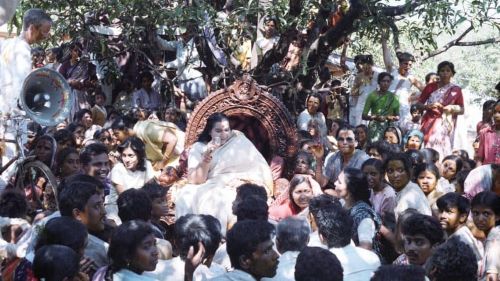
Paraclete Papers
Part One: THE PARACLETE PAPERS: An Investigative Report on Christianity's Greatest Cover-UpPart Two: The Paraclete's Human Personality and the Theological Fallacy of Pentecost
Part Three: The Greatest Deception in Human History: Pentecost as Satan's Trojan Horse
Part Four: Unveiling the Church Born from the Prince's Millennia of Deception
Part Five: Apokalypsis: Paraclete's Fulfillment of Jesus' Eschatological promise from Last Supper in Age to Come
Part Six: The Paraclete and Pentecost: A Critical Analysis of Johannine Eschatology
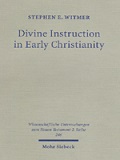 |
“I conclude the chapter by suggesting that the teaching of the Holy Spirit/Paraclete, because it is understood as the continuation of Jesus' teaching, is also regarded as the fulfillment of the promise of eschatological divine instruction.” Stephen E. Witmer Divine instruction in Early Christianity |
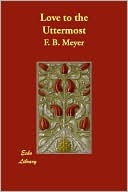 |
“And when Jesus foreannounced another Comforter, He must have intended a Person as distinct and helpful as He had been. A breath, an afflatus, an impersonal influence could not have stood in the same category as Himself.” F. B. Meyer, Love to the Utmost |
 |
“There is something new and startling in both his person and his teaching that defies the categories provided by the world and culture in which he lived. It is clearest in all its radical nature in Jesus' insistence that in his person and activity God's decisive intervention was already present:” Francis Moloney, A Hard Saying |
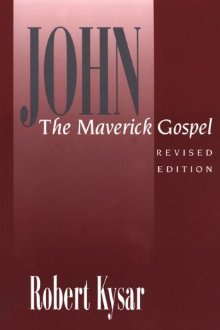 |
“The Paraclete has a twofold function: to communicate Christ to believers and, to put the world on trial.” Robert Kysar, John The Meverick Gospel |
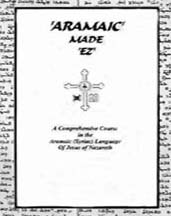 |
“But She—the Spirit, the Paraclete...—will teach you everything.” Danny Mahar, Aramaic Made EZ) |
 |
“Grammatical nonsense but evidence of the theological desire to defeminize the Divine.” Lucy Reid, She Changes Everything |
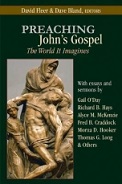 |
“The functions of the Paraclete spelled out in verses 13-15... are all acts of open and bold speaking in the highest degree.” David Fleer, Preaching John's Gospel |
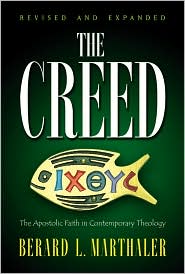 |
“The reaction of the world to the Paraclete will be much the same as the world's reaction was to Jesus.” Berard L. Marthaler, The Creed: The Apostolic Faith in Contemporary Theology |
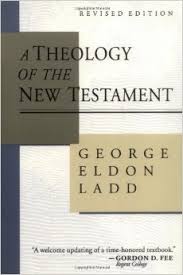 |
Bultmann calls the “coming of the Redeemer an 'eschatological event,' 'the turning-point of the ages.” G. Ladd, A Theology of the New Testament |
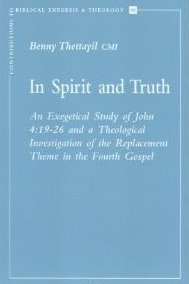 |
“The Paraclete equated with the Holy Spirit, is the only mediator of the word of the exalted Christ.” Benny Thettayil, In Spirit and Truth |
 |
“The divine Paraclete, and no lessor agency, must show the world how wrong it was about him who was in the right.” Daniel B. Stevick , Jesus and His Own: A Commentary on John 13-17 |
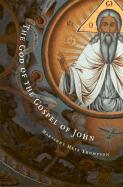 |
Stephen Smalley asserts that “The Spirit-Paraclete ... in John's Gospel is understood as personal, indeed, as a person.” Marianne Thompson, The God of the Gospel of John |
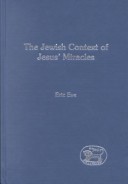 |
“The Messiah will come and the great age of salvation will dawn (for the pious).” Eric Eve, The Jewish context of Jesus' Miracles |
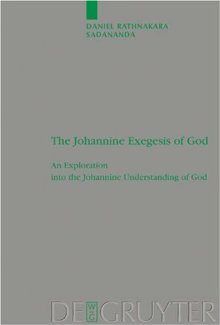 |
“The remembrance is to relive and re-enact the Christ event, to bring about new eschatological decision in time and space.” Daniel Rathnakara Sadananda, The Johannine Exegesis of God |
 |
“The Spirit acts in such an international situation as the revealer of 'judgment' on the powers that rule the world.” Michael Welker, God the Spirit |
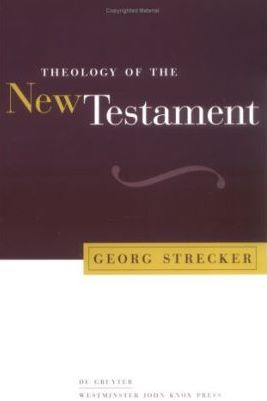 |
The Paraclete's “Appearance means that sin, righteousness, and judgment will be revealed.” Georg Strecker, Theology of the New Testament |
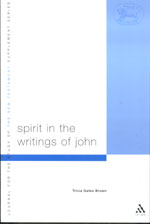 |
“While the Spirit-Paraclete is the true broker, the brokers they rely on are impostors.” T. G. Brown, Spirit in the writings of John |
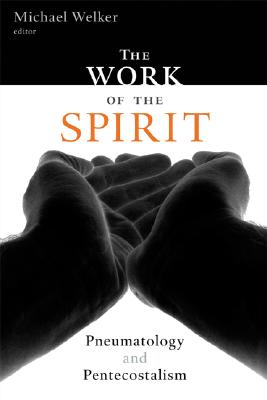 |
“The pneumatological activity ... of the Paraclete ... may most helpfully be considered in terms of the salvific working of the hidden Spirit.” Michael Welker, The work of the Spirit |
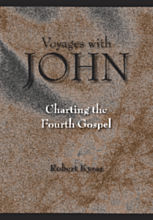 |
“The pneuma is the peculiar power by which the word becomes the words of eternal life.” Robert Kysar, Voyages with John |
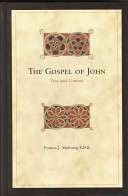 |
“The gift of peace, therefore, is intimately associated with the gift of the Spirit-Paraclete.” Francis J. Moloney, The Gospel of John |
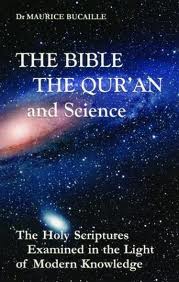 |
“Jesus therefore predicts that God will later send a human being to Earth to take up the role defined by John .i.e. to be a prophet who hears God's words and repeats his message to man.” M. Bucaille The Bible, the Qur'n, and Science |
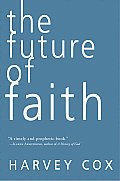 |
“This utopian hope, even when modestly expressed, links Jesus and the prophets to a much wider history of human longing.” Harvey Cox, The Future of Faith |
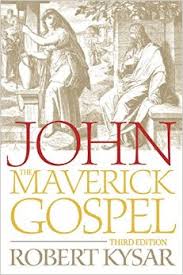 |
“Because of the presence of the Paraclete in the life of the believer, the blessings of the end-times—the eschaton—are already present.” Robert Kysar, John |
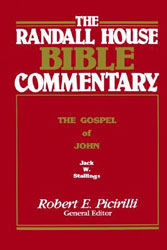 |
“They are going, by the Holy Spirit's power, to be part of the greatest miracle of all, bringing men to salvation.” R. Picirilli, The Randall House Bible Commentary |
 |
“The Kingdom of God stands as a comprehensive term for all that the messianic salvation included... is something to be sought here and now (Mt. 6:33) and to be received as children receive a gift (Mk. 10:15 = Lk. 18:16-17).” G. Ladd, A Theology of the New Testament |
